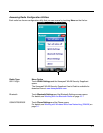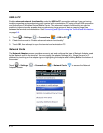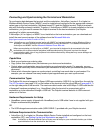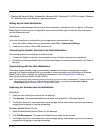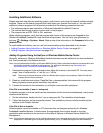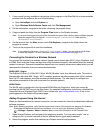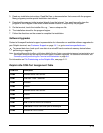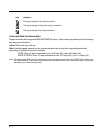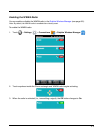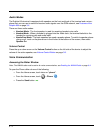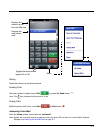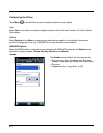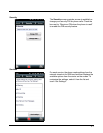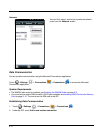
9 - 1
9
Working with Wireless Wide Area Networking (WWAN)
Overview
The Dolphin 60s has one radio option for WWAN connectivity: a GSM WWAN radio, which provides
support for quad-band GSM/GPRS/EDGE (3G) 850/900/1800/1900 MHz.
The radio option support voice and data communication.
Requirements
Using GSM/GPRS/EDGE requires:
• a network subscription to a GSM/GPRS/EDGE network (you need to know what service providers are
in your geographic area), and
• an installed SIM card that has been activated by the network service provider (see Installing a SIM Card
and/or Memory Card on page 3-15).
Antenna Band
The WWAN radio features two internal antennas: an omni-directional antenna optimized for power
output and receiver sensitivity and a second diversity receiver antenna.
For terminals with the multi-mode (software definable) WWAN radio:
• A penta band antenna supports 850/900/1800/1900 Mhz (GSM/GPRS/EDGE).
• A diversity receiver antenna supports 850 & 1900Mhz
For terminals with the GSM WWAN radio:
• A penta band antenna that supports 850/900/1800/1900 Mhz (GSM/GPRS/EDGE).
• A diversity receiver antenna supports 2100Mhz
Signal Strength
On terminals equipped with a WWAN (voice + data) radio, the signal strength of the WWAN connection
is indicated by the number of bars that appear in the signal strength icon in the Title bar at the top of the
window.
GSM Short for Global System for Mobile communications, GSM is an open, non-proprietary wireless
WAN system that is constantly evolving and growing.
GPRS Short for General Packet Radio Service, GPRS is a non-voice value added service that allows
packet-switched data to be instantly sent and received across mobile telephone networks.
EDGE E-GPRS is a non-voice value added service that allows packet-switched data to be instantly sent
and received across mobile telephone networks at a higher data rate than standard GPRS.



